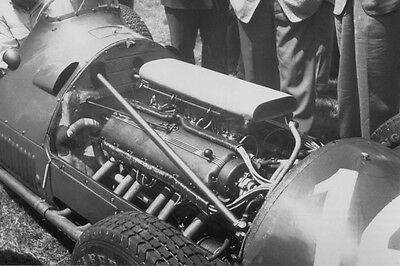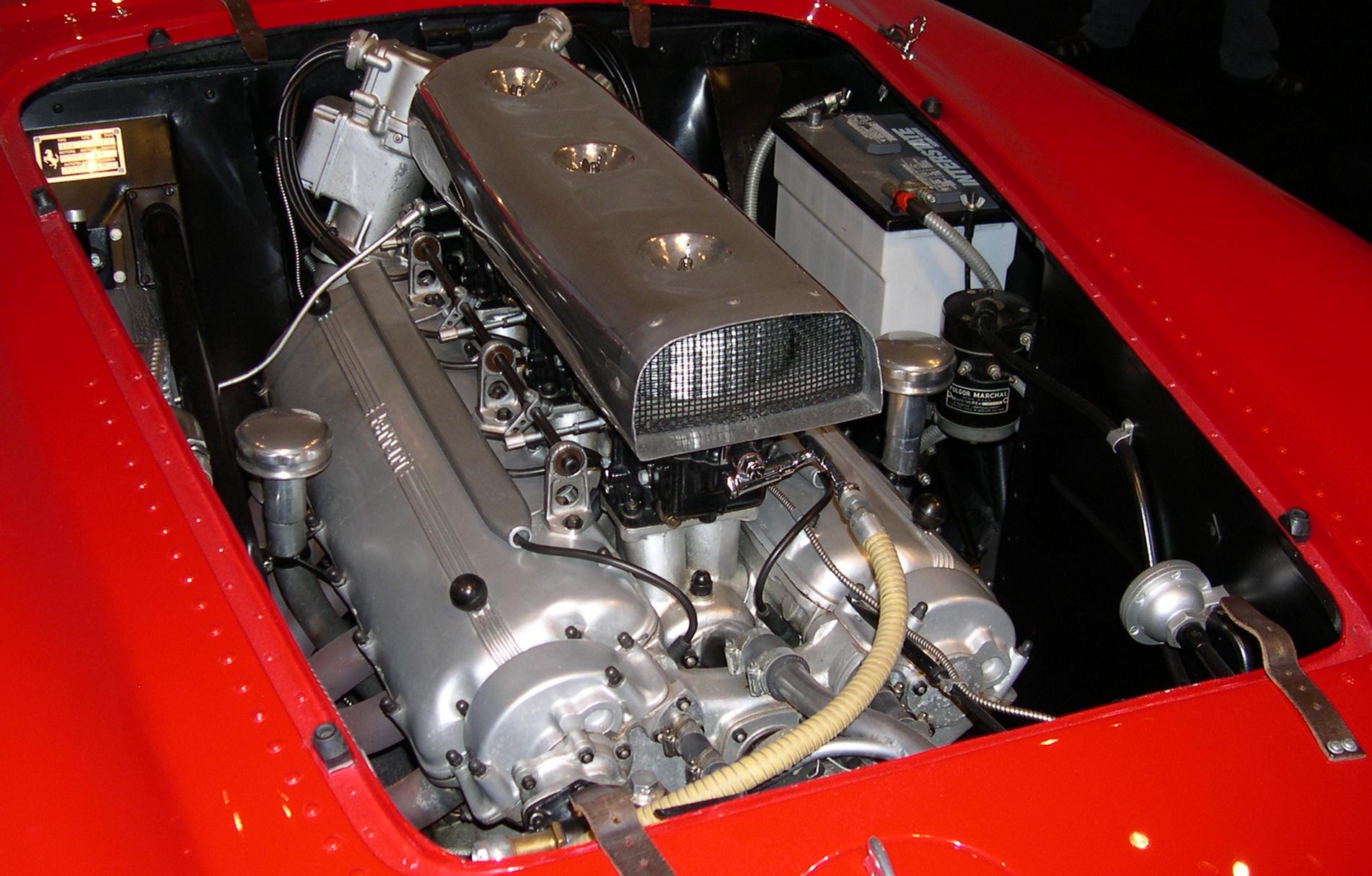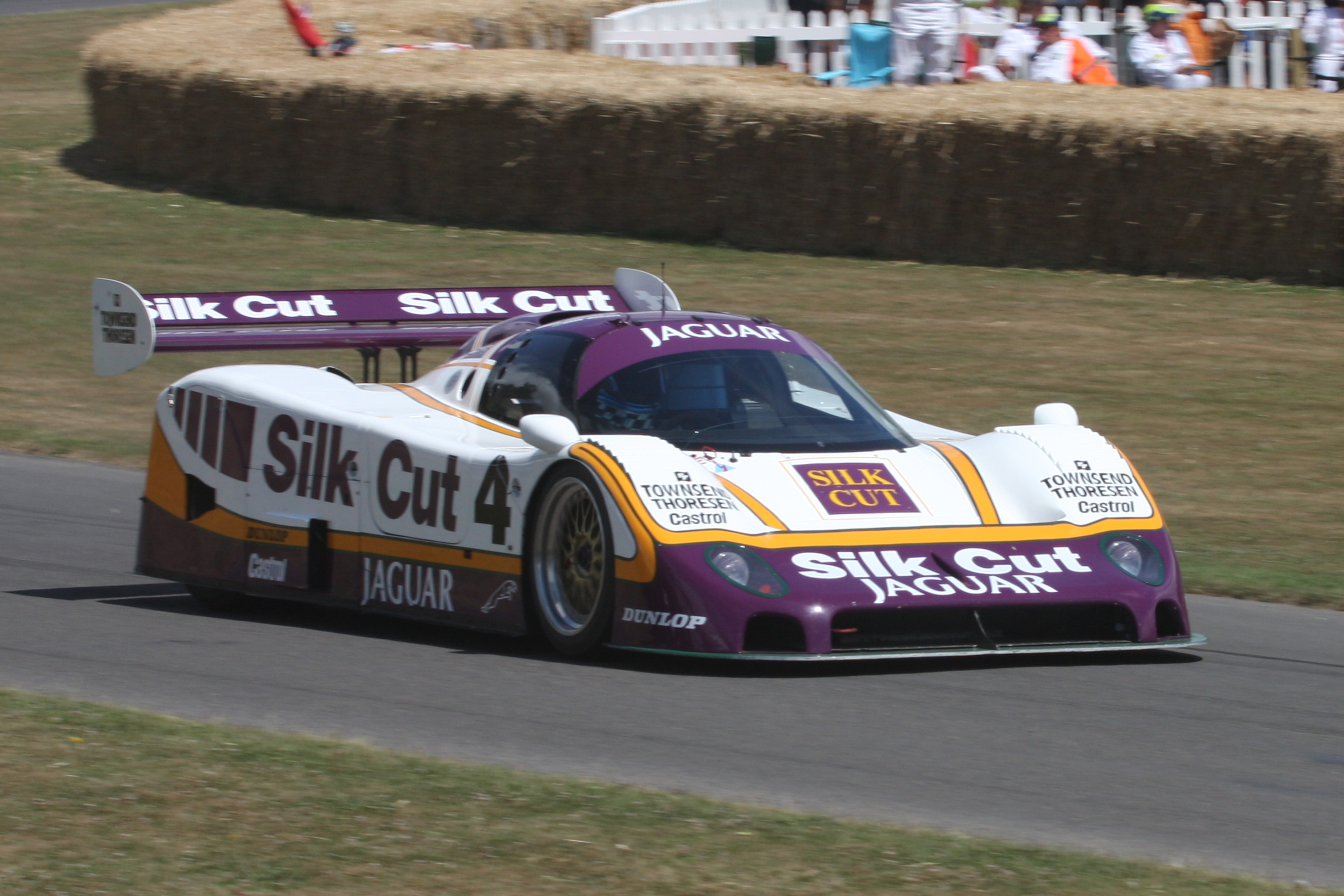|
Ferrari F1 V12
Ferrari has made a number of V12 racing engines designed for Formula One; made between 1950 and 1995. Some derived engines were also used in various Ferrari sports prototype race cars and production road cars. 1.5 L engine (1950-1951) Ferrari's first V12 Formula One engine was the supercharged '' 125 Colombo'' engine; with the 1.5 L engine configuration imposed by the FIA for forced induction engines, in . After finding only modest success with the supercharged 1.5-litre engine, Ferrari decided to switch in 1950 to a naturally-aspirated engine formula for the series. 3.3 L/4.1 L/4.5 L engine (1950-1951) Calling in Aurelio Lampredi to replace Gioacchino Colombo as technical director, Enzo Ferrari directed that the company work in stages to grow and develop an entirely new large-displacement V12 engine for racing. The 3.3-litre (3322 cc/202 in) ''275 Lampredi'' engine made its debut at the Grand Prix of Belgium on June 18. With three Weber 42DCF carburetors, a s ... [...More Info...] [...Related Items...] OR: [Wikipedia] [Google] [Baidu] |
Gioacchino Colombo
Gioachino Colombo (1903–1988) was an Italian automobile engine designer. Colombo was born in Legnano. He began work as an apprentice to Vittorio Jano at Alfa Romeo. In 1937, Colombo designed the 158 engine for the Alfetta and caught the attention of Enzo Ferrari. Ferrari asked Colombo to design a small V12 for use in the new Ferrari marque's racing and road cars. The first Ferrari-Colombo engine appeared on 11 May 1947. Colombo's great work for Ferrari was a tiny 1.5 litre V12, first used in the Tipo 125, 159, and then 166 sports cars. This engine, known in Ferrari circles as the " Colombo engine", was produced for road cars and endurance racing cars for more than 40 years in displacements up to 4.8 L. These included the 3.0 litre Ferrari 250 racing, sports, and GT cars. Colombo's engine was not as successful in Formula One racing. After stunning early success in the 166, the engine was supercharged for use in Formula One but failed to perform well. Ferrari hedg ... [...More Info...] [...Related Items...] OR: [Wikipedia] [Google] [Baidu] |
Ferrari 036-2 Engine Side Museo Ferrari
Ferrari S.p.A. (; ) is an Italian luxury sports car manufacturer based in Maranello, Italy. Founded by Enzo Ferrari (1898–1988) in 1939 from the Alfa Romeo racing division as ''Auto Avio Costruzioni'', the company built its first car in 1940, and produced its first Ferrari-badged car in 1947. Fiat S.p.A. acquired 50% of Ferrari in 1969 and expanded its stake to 90% in 1988. In October 2014, Fiat Chrysler Automobiles (FCA) announced its intentions to separate Ferrari S.p.A. from FCA; as of the announcement FCA owned 90% of Ferrari. The separation began in October 2015 with a restructuring that established Ferrari N.V. (a company incorporated in the Netherlands) as the new holding company of the Ferrari S.p.A. group, and the subsequent sale by FCA of 10% of the shares in an IPO and concurrent listing of common shares on the New York Stock Exchange. Through the remaining steps of the separation, FCA's interest in Ferrari's business was distributed to shareholders of FCA, ... [...More Info...] [...Related Items...] OR: [Wikipedia] [Google] [Baidu] |
Ferrari Lampredi Engine
The Ferrari Lampredi engine was a naturally aspirated all aluminum 60° V12 engine produced between 1950 and 1959. Inline-4 and Inline-6 variants for racing were derived from it. Aurelio Lampredi designed a number of racing engines for Ferrari. He was brought on to hedge the company's bets with a different engine family than the small V12s designed by Gioacchino Colombo. Variants of his design powered the company to a string of world championships in the 1950s. All were quickly abandoned, however, with the Dino V6 and V8 taking the place of the fours and sixes and evolution of the older Colombo V12 continuing as the company's preeminent V12. V12 275 After little luck in Formula One with the supercharged Colombo V12, Ferrari moved to natural aspiration. The task of creating the new V12 for Formula One use fell to Aurelio Lampredi, who designed a 3.3 L (3322 cc) unit, with bore centres at 108 mm apart, for 275 S and 275 F1. The SOHC, 2-valve engine debuted in 275 ... [...More Info...] [...Related Items...] OR: [Wikipedia] [Google] [Baidu] |
Ferrari 125 F1 Engine
Ferrari Società per Azioni, S.p.A. (; ) is an Italian luxury sports car manufacturer based in Maranello, Italy. Founded by Enzo Ferrari (1898–1988) in 1939 from the Alfa Romeo racing division as ''Auto Avio Costruzioni'', the company built Auto Avio Costruzioni 815, its first car in 1940, and produced its first Ferrari-badged car in 1947. Fiat S.p.A. acquired 50% of Ferrari in 1969 and expanded its stake to 90% in 1988. In October 2014, Fiat Chrysler Automobiles (FCA) announced its intentions to separate Ferrari S.p.A. from FCA; as of the announcement FCA owned 90% of Ferrari. The separation began in October 2015 with a restructuring that established Ferrari N.V. (a company Incorporation (business), incorporated in the Netherlands) as the new holding company of the Ferrari S.p.A. group, and the subsequent sale by FCA of 10% of the shares in an initial public offering, IPO and concurrent listing of common shares on the New York Stock Exchange. Through the remaining steps of ... [...More Info...] [...Related Items...] OR: [Wikipedia] [Google] [Baidu] |
Enzo Ferrari
Enzo Anselmo Giuseppe Maria Ferrari (; 20 February 1898 – 14 August 1988) was an Italians, Italian motor racing driver and entrepreneur, the founder of the Scuderia Ferrari Grand Prix motor racing team, and subsequently of the Ferrari automobile marque. He was widely known as "''wikt:commendatore#Italian, il Commendatore''" or "''il Drake''". In his final years he was often referred to as "''l'Ingegnere''" (the Engineer) or "''il Grande Vecchio'' (the Great Old Man)". Early life Enzo Ferrari was said to have been born on 18 February 1898 in Modena, Italy and that his birth was recorded on 20 February because a heavy snowstorm had prevented his father from reporting the birth at the local registry office; in reality, his birth certificate states he was born on 20 February 1898, while the birth's registration took place on 24 February 1898 and was reported by the midwife. He was the younger of two children to Alfredo Ferrari and Adalgisa Bisbini, after his elder sibling ... [...More Info...] [...Related Items...] OR: [Wikipedia] [Google] [Baidu] |
Forced Induction
In an internal combustion engine, forced induction is where turbocharging or supercharging is used to increase the density of the intake air. Engines without forced induction are classified as naturally aspirated. Operating principle Overview Forced induction is often used to increase the power output of an engine. This is achieved by compressing the intake air, to increase the mass of the air-fuel mixture present within the combustion chamber. A naturally aspirated engine is limited to a maximum intake air pressure equal to its surrounding atmosphere; however a forced induction engine produces "boost", whereby the air pressure is higher than the surrounding atmosphere. Since the density of air increases with pressure, this allows a greater mass of air to enter the combustion chamber. Theoretically, the vapour power cycle analysis of the second law of thermodynamics would suggest that increasing the mean effective pressure within the combustion chamber would also increase ... [...More Info...] [...Related Items...] OR: [Wikipedia] [Google] [Baidu] |
Formula One Engines
Since its inception in 1947, Formula One has used a variety of engine regulations. "Formulae" limiting engine capacity had been used in Grand Prix racing on a regular basis since after World War I. The engine formulae are divided according to era. Operation Formula One currently uses 1.6 litre four-stroke turbocharged 90 degree V6 double-overhead camshaft (DOHC) reciprocating engines. They were introduced in 2014 and have been developed over the subsequent seasons. The power a Formula One engine produces is generated by operating at a very high rotational speed, up to 20,000 revolutions per minute (rpm). However, they are electronically limited to 15,000 as of 2021 season. This contrasts with road car engines of a similar size, which typically operate at less than 6,000 rpm. The basic configuration of a naturally aspirated Formula One engine had not been greatly modified since the 1967 Ford Cosworth DFV and the mean effective pressure had stayed at around 14 b ... [...More Info...] [...Related Items...] OR: [Wikipedia] [Google] [Baidu] |
Ferrari Colombo Engine
The Ferrari Colombo Engine was a petrol fueled, water cooled, carburetted 60° V12 engine designed by Gioacchino Colombo and produced in numerous iterations by Italian automaker Ferrari between 1947 and 1988. The maker's first homegrown engine, its linear successor is the Lampredi V12, which it far outlived, the last Lampredi being made in 1959. Colombo, who had previously designed Alfa Romeos for Enzo Ferrari, placed bore centres at 90 mm apart, allowing for significant expansion. Displacements ranged from the diminutive debut that powered the 125S racer to the unit in the 1986 412i grand tourer. Significant updates were made in 1963 for the 330 series, featuring a redesigned block with wider, 94 mm, bore spacing. Enzo Ferrari had long admired the V12 engines of Packard, Auto Union, and Alfa Romeo (where he was long employed), but his first car, the 1940 Auto Avio Costruzioni 815, used a Fiat derived straight-8. Development of the V12 Colombo engine continued long after Co ... [...More Info...] [...Related Items...] OR: [Wikipedia] [Google] [Baidu] |
Supercharged
In an internal combustion engine, a supercharger compresses the intake gas, forcing more air into the engine in order to produce more power for a given displacement. The current categorisation is that a supercharger is a form of forced induction that is mechanically powered (usually by a belt from the engine's crankshaft), as opposed to a turbocharger, which is powered by the kinetic energy of the exhaust gasses. However, up until the mid-20th century, a turbocharger was called a "turbosupercharger" and was considered a type of supercharger. The first supercharged engine was built in 1878, with usage in aircraft engines beginning in the 1910s and usage in car engines beginning in the 1920s. In piston engines used by aircraft, supercharging was often used to compensate for the lower air density at high altitudes. Supercharging is less commonly used in the 21st century, as manufacturers have shifted to turbochargers to reduce fuel consumption and/or increase power outputs. Des ... [...More Info...] [...Related Items...] OR: [Wikipedia] [Google] [Baidu] |
Production Car
Production vehicles or production cars are mass-produced identical models, offered for sale to the public, and able to be legally driven on public roads ( street legal). Legislation and other rules further define the production vehicle within particular countries or uses. There is no single fixed global definition of the term. Origin In 1896 the term ''production car'' was used to describe a railway carriage that carried the scenery for an opera company. The earliest use of the term ''production car'' being applied to motor cars, found to date, was in a June 1914 American advertisement for a Regal motor car. The phrase was a shortened form of ''mass-produced'' or ''quantity-produced'' car. The phrase was also used in terms of the car to be made in production, as opposed to the prototype. At that time production cars referred to cheaper vehicles such as Model T's that were made in relatively large numbers on production lines, as opposed to the more expensive coach built models. ... [...More Info...] [...Related Items...] OR: [Wikipedia] [Google] [Baidu] |
Sports Prototype
A sports prototype, sometimes referred to as simply a prototype, is a type of race car that is used in the highest-level categories of sports car racing. These purpose-built racing cars, unlike street-legal and production-based racing cars, are not intended for consumer purchase or production beyond that required to compete and win races. Prototype racing cars have competed in sports car racing since before World War II, but became the top echelon of sports cars in the 1960s as they began to replace homologated sports cars. Current ACO regulations allow most sports car series to use two forms of cars: grand tourers (GT), based on street cars, and prototypes, which are allowed a great amount of flexibility within set rule parameters. In historic racing, they are often called "sports racing cars". Sometimes, they are incorrectly referred to as "Le Mans cars", whether they are competing in the Le Mans race or not. Types of sports prototypes Since the 1960s, various championships ... [...More Info...] [...Related Items...] OR: [Wikipedia] [Google] [Baidu] |
Formula One
Formula One (also known as Formula 1 or F1) is the highest class of international racing for open-wheel single-seater formula racing cars sanctioned by the Fédération Internationale de l'Automobile (FIA). The World Drivers' Championship, which became the FIA Formula One World Championship in 1981, has been one of the premier forms of racing around the world since its inaugural season in 1950. The word ''formula'' in the name refers to the set of rules to which all participants' cars must conform. A Formula One season consists of a series of races, known as ''Grands Prix'', which take place worldwide on both purpose-built circuits and closed public roads. A points system is used at Grands Prix to determine two annual World Championships: one for drivers, the other for constructors. Each driver must hold a valid Super Licence, the highest class of racing licence issued by the FIA. The races must run on tracks graded "1" (formerly "A"), the highest grade-rating issued ... [...More Info...] [...Related Items...] OR: [Wikipedia] [Google] [Baidu] |






.jpg)




